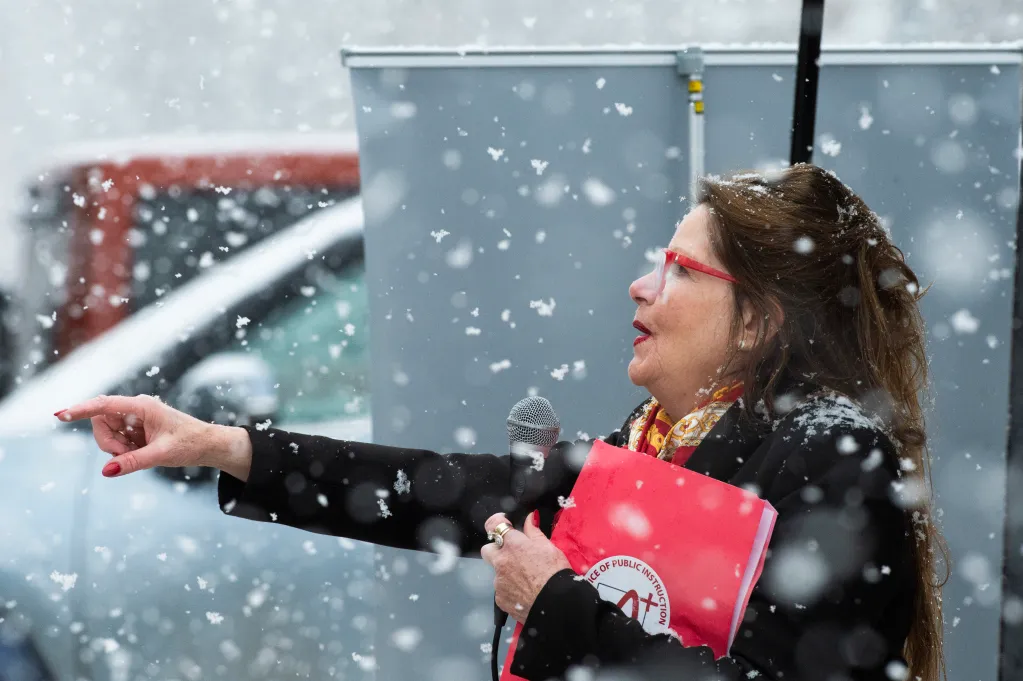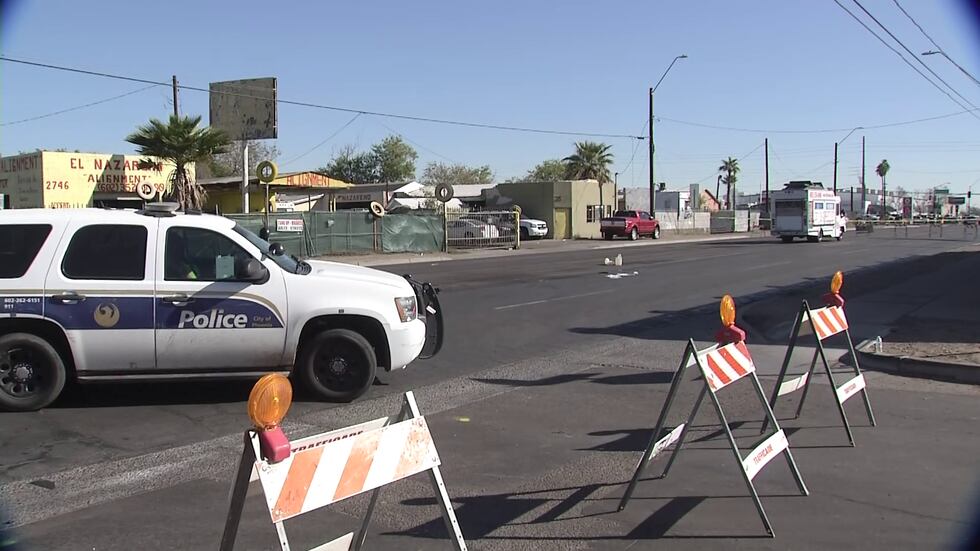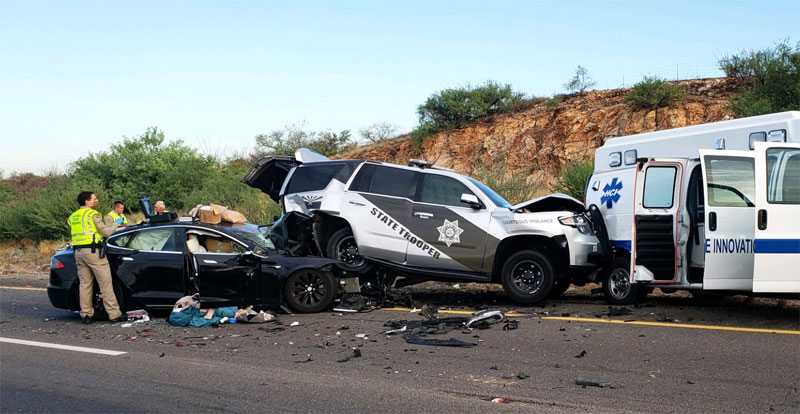
Montana’s Justice and Political Landscape: An Opinion Editorial
Recent news from Montana has set the stage for a wide-ranging discussion on justice, community safety, and political activism. From the sentencing of a Lolo man convicted in a child exploitation case to heated political rallies in Missoula featuring figures like Bernie Sanders and Alexandria Ocasio-Cortez (AOC), our state finds itself at a crossroads. As an observer and editor with expert legal knowledge, I wish to dig into these controversial issues – examining the tricky parts, tangled issues, and subtle parts that make our local legal and political scene so charged with debate.
This editorial will take a closer look at several key topics: Montana’s tough stance on child exploitation, federal drug conspiracies and their resulting penalties, the politics behind progressive rallies in Missoula, and community concerns over public safety and public health. Through tables, bullet lists, and focused discussions, we aim to offer a balanced perspective that respects diverse viewpoints while addressing the underlying legal and political questions. Join me as we figure a path through the twists and turns of recent news events in Montana.
Montana’s Tough Stance on Child Exploitation and the Sentencing of a Lolo Resident
One of the most eye-catching pieces of news coming out of Montana recently involved the sentencing of a Lolo man to 20 years in prison for his role in child pornography. This outcome has ignited discussion about the seriousness of child exploitation crimes and how the legal system addresses such acts with firm resolve.
The case, filled with nerve-racking details and complicated pieces of evidence, demonstrates the state’s commitment to uphold the rights and safety of its youngest community members. Critics and advocates alike have been weighing in on whether the sentence fits the crime, while community members debate the many fine points of the case that might have contributed to such a heavy sentence.
Pondering the Fine Points of the Child Exploitation Case
Child exploitation cases carry with them a mix of legal and emotional dimensions. On one hand, the legal system must ensure that punishment meets legal standards and deterrence is maintained. On the other, communities demand that justice be swift and unforgiving, given the nerve-racking nature of such offenses.
Let’s break down a few of the subtle parts that many legal analysts and community leaders are focusing on:
- Evidence Handling: Assessing how the trickier bits of evidence were managed can lead to debates over due process and the methods used during the investigation.
- Sentencing Guidelines: While sentencing guidelines attempt to provide a structured approach, the tangled issues of individual circumstances can lead to outcomes that seem off-putting or unexpectedly severe.
- Victim Impact: The nerve-racking emotional toll on victims and their families plays a critical role in how justice is both perceived and administered. The emotional narratives surrounding these cases often prompt calls for victim support measures alongside punitive actions.
Several legal minds believe that while the sentence does fit within the framework of the law, it also spotlights the need for broader discussions about how our justice system handles cases layered with such complicated pieces of evidence and subtle complications.
Federal Drug Conspiracies and the Struggle Against Illicit Distribution
Another pivotal issue central to Montana’s recent legal drama involves federal drug charges. A Kalispell man was sentenced to federal prison for conspiring to distribute drugs – a verdict that reflects the state’s unyielding fight against illicit drug distribution networks. This case, like others spread across the state, showcases the challenges law enforcement faces when trying to get around tangled issues and the confusing bits of code that criminal networks operate by.
Federal drug cases are often riddled with tension and loaded with issues, from the way evidence is gathered to the interpretation of federal statutes. In such cases, “getting into” the little details can mean the difference between a conviction that upholds public safety and a sentence that casts shadows over judicial fairness.
Breaking Down the Critical Elements of Federal Drug Trials
To fully understand the implications of this drug conspiracy case, it is essential to consider several key elements:
- Chain of Evidence: The process of gathering evidence is often fraught with nerve-racking tests of both meticulous procedure and legal interpretation. Law enforcement must steer through a maze of evidence protocols, ensuring that every detail stands up in court.
- Legal Precedents: How existing court decisions influence the current trial outcomes is a subject of much debate. The small distinctions between similar cases can make for subtle shifts in sentencing outcomes across different jurisdictions.
- Community Impact: Beyond the courtroom, the societal effect of drug-related crimes is profound. With drug distribution contributing to public health crises, community leaders often stress that addressing these issues goes hand in hand with broader social reform.
Below is a table that outlines some of the key legal steps in processing such cases, which might help clarify the overall process:
| Legal Phase | Description |
|---|---|
| Investigation | Gathering evidence and testimony systematically to establish the crime's extent. |
| Arrest and Charge | Formal charges are brought against suspects based on preliminary evidence. |
| Negotiation | Legal teams may negotiate plea deals while addressing complicated bits of legal strategy. |
| Trial Process | Both sides present their cases, and subtle details in evidence can pivot the decision-making process. |
| Sentencing | Judges assign penalties aimed at balancing retribution, deterrence, and public safety concerns. |
By studying these phases closely, legal experts hope to refine strategies and craft guidelines that better navigate the tricky parts inherent in federal cases. The ongoing dialogue within Montana about the severity and appropriateness of sentences remains a key aspect of understanding our state’s position on law enforcement and public safety.
Political Activism in Missoula: From Progressive Rallies to Community Debates
The political climate in Montana has been charged with energy, as evidenced by recent rallies in Missoula, where progressive leaders Bernie Sanders and AOC addressed full houses in packed venues. These events, full of animated discussion and on-edge political debate, underscore the state’s dynamic political culture and its engagement with national issues.
Missoula has long been a hub for political discourse, where citizens come together to address matters that impact not only local governance but also influence national policy. Attendees at the rallies have shown that political participation is seen as must-have civic engagement, a crucial element in the democratic process.
A Closer Look at Progressive Activism in Missoula
Progressive activism in this context is a subject full of problems regarding balancing ideals with pragmatic community needs. Here are several subtopics that highlight the fine points of recent political activity in Missoula:
- Community Mobilization: Rallies have demonstrated how local communities can make their way through tangled issues by uniting behind common causes. Protestors and supporters alike identify that the power of collective action is key to fostering change.
- Legislative Priorities: Political leaders are pressed to lay out clear legislative priorities. While some argue that these priorities are critical for future reform initiatives, others maintain that the goals sometimes seem overly ambitious or disconnected from everyday challenges.
- Partisan Divides: The heated political atmosphere often brings to light the nerve-racking differences between various political factions. Moderate voices, in particular, urge that legislative debates should focus on constructive dialogue rather than polarizing blame.
- Social Justice Reform: Activists continue to champion issues like insurance reform, education equality, and environmental safeguards. There is a firm belief that by addressing these fine points and slight differences with sensitivity, a more inclusive policy framework can be forged.
Critics of the progressive movement in Missoula sometimes argue that the rallies are more about political theater than about addressing the everyday needs of citizens. However, many participants feel that these public forums are essential for stirring up debates that are long overdue. The presence of renowned figures on the national stage adds another layer of complexity, prompting many to ask whether the outcomes of these rallies will translate to real, measurable change.
While the political scene is undoubtedly loaded with challenges, it is also filled with opportunities to take a closer look at how public policy can evolve. As Missoula continues to be a lively center of activism, it remains important for community leaders, legislators, and citizens to work through the fine points of governance with careful attention to the subtle parts that may otherwise be overlooked.
Community Health and Safety: Overdose Increases and Public Infrastructure
Another pressing issue in Montana pertains to community health, specifically the increase in overdoses as reported by local health officials. This trend has raised concerns among policymakers and public safety advocates, as it touches on the nerve-racking intersection of public health and law enforcement. Addressing the overdose crisis requires a nuanced understanding of the tangled issues surrounding addiction and public health infrastructure.
Public safety in the realm of health is not solely a matter of criminal justice; it also involves supportive services, educational programs, and accessible healthcare avenues. When the legal and medical communities get into the little details of addiction, they face a maze of challenges that include the stigma of substance abuse, the need for compassion in treatment, and the necessity of preventative measures.
Deconstructing the Overdose Crisis in Montana
It is vital to break down this crisis into digestible segments to understand the nerve-racking challenges faced by the community. Here are a few key components of Montana’s overdose epidemic:
- Identification of Hotspots: Certain areas have been identified as having higher incidence rates of overdose cases. Local health officials are working exhaustively to track these trends and pinpoint the subtle differences that may indicate systemic problems.
- Access to Resources: One of the most debated issues is how to improve access to addiction treatment and rehabilitation resources. Community leaders advocate for more accessible and less intimidating treatment centers in high-risk areas.
- Public Awareness Campaigns: Educating the public about overdose prevention and intervention has become a central strategy. These campaigns are designed to steer through confusing bits of misinformation and offer clear, actionable guidance.
- Law Enforcement Coordination: Effective coordination between public health agencies and police forces is essential. It is a challenge to balance enforcement with empathy, particularly when dealing with individuals caught in the grip of addiction.
Below is a summary table that outlines the primary challenges and proposed solutions for managing the overdose crisis in Montana:
| Challenge | Proposed Solution |
|---|---|
| Identifying Overdose Hotspots | Enhanced data tracking and community surveys to pinpoint issues |
| Limited Addiction Resources | Investment in local treatment centers and improved healthcare access |
| Public Misinformation | Clear public awareness campaigns that debunk myths and provide guidance |
| Enforcement vs. Support | Joint initiatives between law enforcement and public health agencies |
By working together and addressing these issues head-on, Montana could lead the way in finding your path through one of the most intimidating public health crises of our time. The challenge goes beyond simple enforcement and enters the realm of community healing and sustainable policy development.
Legal and Social Implications of Local Incidents
Aside from the more high-profile stories that make the headlines, several local incidents contribute to an ongoing dialogue that spans the legal system and community safety. For example, reports about travel hazards such as the accident near Bozeman Pass and issues on I-90 demonstrate that public safety is a multi-layered concern, involving both the legal and infrastructural realms.
Each incident, whether related to transportation, public health, or community violence, is wrapped up in a host of subtle details and additional contexts. It can be nerve-racking to get into the evidence behind these events, but doing so is critical for a well-rounded understanding of the policy implications. Local lawmakers are increasingly aware that they must steer through these issues by considering both the legal perspectives and the community’s everyday experiences.
Addressing the Nitty-Gritty of Local Public Safety Issues
Recent accidents and incidents point to several fine points that require attention:
- Infrastructure Failures: Occasional mishaps on major highways might signal larger systemic problems with public infrastructure. These events call for deeper public reviews of maintenance and safety protocols.
- Emergency Response: Effective coordination among emergency services is essential after accidents. Community leaders stress that improving these services is super important for minimizing the nerve-racking impact of future incidents.
- Legal Accountability: Determining the scheme of accountability—including public and private responsibilities in ensuring safety—remains a point of debate among legal experts and community advocates alike.
In many cases, the details may seem small or peripheral. However, when these slight differences accumulate, they form the backbone of a community-wide call for enhanced safety measures and more solid legal responses. Local governance, in collaboration with federal oversight, must work diligently to sort out these fine points for the overall benefit of public safety.
Balancing Public Opinion With Legal Rigor
Montana’s recent legal and political events exemplify the constant push and pull between public sentiment and the need for structured legal process. Whether dealing with child exploitation, drug conspiracy, political activism, or transportation mishaps, the state’s legal system encounters various nerve-racking challenges that require a comprehensive approach.
In many ways, the delicate balancing act between enforcing justice and addressing social issues is reminiscent of trying to make your way through a labyrinth of conflicting interests. On one side, there’s the need for immediate, sometimes strict, legal action; on the other, there’s an effort to maintain fairness, rehabilitation, and compassionate community support.
Key Factors in Balancing Public Opinion and Legal Processes
Let’s outline the main factors that contribute to this balancing act:
- Public Perception vs. Legal Standards: Often, the public’s call for swift justice can clash with the legal system’s methodical approach, leading to debates over whether penalties are too harsh or too lenient.
- Media Influence: The role of local news, social media, and opinion editorials in shaping perceptions cannot be underestimated. Headlines, soundbites, and viral posts may prioritize the most dramatic aspects of a case, sometimes at the expense of subtle details that are critical for true justice.
- Judicial Independence: While judges must adhere to legal precedents and statutory requirements, they also face public scrutiny, which can occasionally create tension between personal judgment and community expectations.
This delicate balance is central to many discussions about Montana’s legal landscape. Legal experts argue that while the public is entitled to its opinion, the ultimate measure of justice must come from a careful analysis of every fine shade of evidence and circumstance before a verdict is rendered.
The Road Ahead: What Montana Can Learn From Recent Events
As the state continues to grapple with these varied issues—from high-profile criminal cases to grassroots political mobilization—there arises a clear need for reflection and reformation in multiple arenas. At its core, the discussion often revolves around how best to make your way through the tangled issues of law and policy while ensuring that all community members feel their voices are heard.
Montana now stands as a microcosm of broader national debates on public safety, judicial rigor, and political activism. The following factors are crucial for moving forward:
- Enhanced Legal Frameworks: There is a pressing need to refine legal procedures so that even when the evidence is full of problems or the twists and turns are many, the system remains both fair and effective.
- Community Engagement: Legislative efforts must incorporate sound advice from both legal experts and community advocates. By working together, we can address movie-worthy public issues with the care they deserve.
- Transparent Communication: Open channels for dialogue between law enforcement, policymakers, and citizens are essential. Ensuring that the decision-making process is visible to the public can help ease the overwhelming sense of skepticism that sometimes clouds controversial legal decisions.
- Focus on Preventative Measures: Whether the concern is about child exploitation, drug distribution, or overdose chances, preventive strategies that reach into the community are as essential as punitive measures after a crime.
Importantly, the journey forward involves not only analyzing current challenges but also setting the stage for long-term solutions that take into account the myriad small distinctions characteristic of Montana’s social, political, and legal environment.
Steps for Future Legal and Social Reform
To provide a clearer picture for what lies ahead, consider the following steps that many experts recommend as necessary for success in our evolving landscape:
- Investing in Education and Training: Training programs for law enforcement and legal practitioners that focus on the little details of modern criminal methods can help update outdated procedures.
- Strengthening Community Outreach: Implementing regular town hall meetings and outreach programs can reduce the intimidating gap between the public and the legal systems.
- Updating Technology and Data Handling: Utilizing advanced data analytics to monitor and predict trends in criminal behavior is key to catching the subtle parts of criminal operations before they escalate.
- Developing Comprehensive Support Networks: Beyond the courtroom, stronger networks for victim support—especially in cases of child exploitation and drug abuse—must be established to ensure thorough recovery and community healing.
The path forward is not without setbacks or nerve-racking challenges. However, by committing to proactive measures and transparent governance, Montana can turn its current hurdles into learning opportunities that benefit the entire state.
Community Reflections: Voices From Montana
No discussion about these legal and political issues is complete without acknowledging the diverse voices that comprise our community. From local activists to seasoned legal professionals, opinions vary widely regarding how cases should be handled and what steps are necessary to build a safer future. This multiplicity of views is both a strength and a challenge: while it brings in a range of ideas, it also requires that decision-makers be adept at sorting out contradictory opinions while staying focused on the public good.
It is important to recognize a few key themes that have emerged from conversations across Montana:
- Demand for Accountability: Citizens expect that local law enforcement and political leaders will be transparent and accountable. Calls for reform are driven by a need to see justice done, particularly in cases that impact vulnerable groups such as children.
- Support for Comprehensive Care: Many community members advocate that robust support systems and mental health services are just as crucial as well-timed legal interventions, especially when dealing with substance abuse and addiction.
- Push for Policy Reforms: There is growing pressure for lawmakers to revisit old policies and implement new ones that reflect the current social and legal realities. This means not only stricter sentencing in some cases but also more holistic rehabilitation initiatives in others.
Below is a simple table outlining some of these community concerns and potential policy responses:
| Community Concern | Potential Policy Response |
|---|---|
| Child Exploitation Cases | Stricter sentencing guidelines combined with victim rehabilitation programs |
| Drug Distribution Networks | Enhanced law enforcement coordination and comprehensive public health interventions |
| Public Health Crises (Overdoses) | Increased funding for addiction treatment centers and proactive community outreach |
| Infrastructure and Public Safety Incidents | Regular safety audits and improved emergency response protocols |
This multi-dimensional approach is key to addressing the nerve-racking issues of our time while ensuring that the system remains fair and effective. Community feedback, when taken seriously by policymakers, can light the way for change that benefits everyone.
Conclusion: Seeking Justice and Inclusivity in Challenging Times
In conclusion, Montana’s recent events present us with a vivid example of how law, politics, and community interests intersect in ways that are both complicated and compelling. Whether discussing the 20-year sentence handed down in a child exploitation case, the federal drug conspiracy verdict in Kalispell, or the dynamic political rallies drawing national attention in Missoula, the state is faced with challenges that require careful, measured responses.
Throughout these debates, it is crucial to remember that while the process of enacting justice may seem intimidating or overwhelming at times, it is the little details and subtle parts – the twists and turns of each case – that define the reliability and fairness of our legal system. By addressing both the immediate legal concerns and the larger social issues, Montana has an opportunity to pave the way for a future where public safety, accountability, and community well-being are prioritized equally.
Moving forward, it is super important that lawmakers, legal practitioners, and community leaders work alongside one another to get around the myriad of tricky parts and tangled issues that have come to light in these cases. For instance, improving infrastructure safety, modernizing data handling in law enforcement, and expanding access to mental health services are all crucial steps that require thoughtful, inclusive debate and decisive action.
The road ahead is undeniably filled with challenges, yet it is also bright with the promise of progress. By taking a balanced approach that embraces both legal rigor and compassionate community support, we can ensure that Montana continues to be a place where justice is delivered effectively and inclusivity remains at the heart of policy-making.
As residents, we must remain engaged, informed, and committed to supporting initiatives and reforms that strive to address every nerve-racking detail of our society’s legal and social landscape. Whether you are a constituent, a community advocate, or simply a concerned citizen, your involvement plays a critical part in carving out an equitable path forward that respects diverse voices and meets the challenges of our times head-on.
In these trying times, let our collective efforts serve as a reminder that while the legal system may sometimes get bogged down in its tangled issues, the spirit of community and the drive for effective change can, and will, help us find our way through the maze of modern challenges. Together, we can steer through these complex environments and foster an environment where every citizen’s safety, rights, and well-being are upheld with the utmost integrity and compassion.
Ultimately, the debates sparked by recent events remind us that justice is not only found in courtrooms but also in the ongoing dialogue between citizens and their elected representatives—a dialogue characterized by vigilance, accountability, and a shared commitment to building a smarter, safer, and more inclusive Montana.
Originally Post From https://nbcmontana.com/news/local/nbc-mt-today-sanders-aoc-rally-montana-congressional-delegation-responds-wind-snow
Read more about this topic at
Bonanza - Las Vegas
Police searching for suspect following homicide near ...





